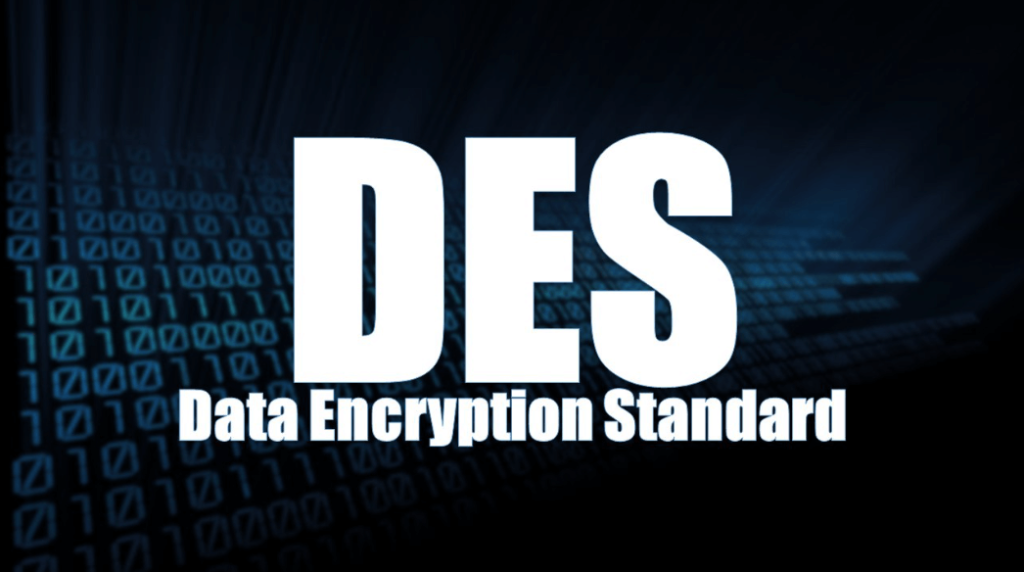What Is DES? Data Encryption System Explained

Information security is a big problem on the Internet today. Because online data is constantly moving from end to end, many procedures must be followed to ensure data security. Various organizations are working to find a safer way to protect their data. There are also key issues related to information security – such as confidentiality, accessibility, etc. On the other hand, it indicates that only authorized users have access to sensitive data, and confirms that no one has changed the data at the mid-level.
Also, it means that the data has reached another user without change or interruption. Finally, the availability of data makes it available to all authorized users. Almost all processes use some form of encryption or decryption algorithm to protect data from media attacks. The main purpose of this article is to describe the Data Encryption Standard (DES) and how it provides data security.
Data Encryption System – Explained!
It is considered that the DES is also integrated into numerous communication networks. For example, there is communication between an Automatic – Teller – Machine (A-T-M) and a computer. The message is sent to the computer via an ATM, and then the computer responds to the ATM with a multitude of messages that contain confidential information about the status of the individual’s account that is downloaded from it. Most multinational companies and managements rely on electronic methods of transmitting information.
As far as data collecting method changes completely, their amount and speed will increase significantly due to future telecommunications technology and the latest computer machines. With the rapid improvement of electronic tech, electronic observation is no longer costly and is also available to many customers.
Working of DES
DES is a symmetric encryption program in which the sender and recipient must know the secret key for secure communication. If the messages are encrypted using D-E-S, one of the 16 – keys available in the transition and substitution cycle is selected and applied to each 64 – bit message data block. A large number of keys make D-E-S fairly secure.
IBM researchers originally developed D-E-S in the early 1970s for the US government to encrypt commercial and sensitive but unregistered public computer data as a Federal – Information – Processing – Standard (F-I-P-S). It ensured that industries like financial services were quick to buy D-E-S as demand for strong encryption peaked. D-E-S has also made it possible to use it on a variety of embedded systems, smart cards, and networks that require encryption, such as modems, configuration frames, and routers.
Security Measures
Administrative security should exist before encryption and should be included in key management practices during encryption. Physical security is essential in computer systems. Additional requirements for the protection of encryption tools during encryption must be met. However, an efficient person who owns Microsoft Azure security training background must use a cryptographic system for an encryption device. On the other end, specifications and announcement are the two different measures. For unclassified information, if cryptographic protection is required, encryption material must be obtained if the F-I-P-S is following it.
The section of specifications encrypts and decrypts the data. However, the announcement section provides administrative information. Make sure the message is selected correctly. Scheduling these calculations in the machine is usually too complicated. The key to removal and differential analysis increases the strength of D-E-S by repeated encryption. However, a very complex algorithm has been identified in D-E-S. It is an integrated cryptographic algorithm that facilitates high complexity security.
The Influence of the DES
This led to changes in the algorithm, including a key size of 112 to 56 – bits. Because the National – Security – Agency (N-S-A) was involved in the entire process, many researchers did not believe in the power of the encryption algorithm. This coverage led to an increase in the number of cryptographic studies – and this shows how much the government and intelligence organizations researched cryptography, mostly as long as the D-E-S was connected to the hypothetical community.
Because companies have to distribute and manage a large number of keys, most encryption services have adapted and used asymmetric algorithms to change the secret key after using symmetric data algorithms. The popularity of the D-E-S algorithm stems from the fact that public and private keys can encrypt messages to ensure the confidentiality, integrity, and reliability of THE communications and data using signatures digitally.
Common Popular Challenges
The most basic method of encryption attacks today is the force of fear or random testing of keys until the right one is found. Other encryption methods include parallel attacks and cryptographic analysis. These attacks tend to be effective when there is a flaw in the design or operation of the system. Similarly, cryptographic analysis involves identifying and exploiting cryptographic vulnerabilities. Encryption is more likely to occur if it is encrypted itself. These algorithms ensure confidentiality and perform key security functions, including authentication, and integrity. Also, it does not guarantee that the sender of the message cannot refuse to send the message.
Data Encryption Solutions
Encryption solutions for data protection can provide device encryption, email, and the data itself. In many cases, encryption features are also associated with data management capabilities. To this end, they must ensure the correct use of devices and applications and the security of data by automatically encrypting them even after parting the organization.
However, email control and encryption are other important part of data protection solutions. Secure and encrypted email is the only solution for compliance, remote business, B-Y-O-D, and outsourcing. The best anti-data solutions prevent, automatically block, and encrypt sensitive data according to the content and context of messages, such as users, data categories, and recipients.
Although data encryption may seem like a complex and complicated process, the data loss prevention computing program is reliably handled daily. Choose the best software protection program that allows you to encrypt data with devices, email, and application management, and make sure your data is secure.
Conclusion
It is concluded that D-E-S was initially developed by I-B-M, and due to its unique design, the commercially available selective text was required for the anti-DES cryptographic attack. For computer data, the official federal standard provided high cryptographic security. However, the device is provided by private vendors, but the users are the state and private firm-level individuals. The intelligence community and individuals are also integrated to make their activities more productive for the relevant mission. Including industry and government, the standard has made it easier to fit into all dimensions.






